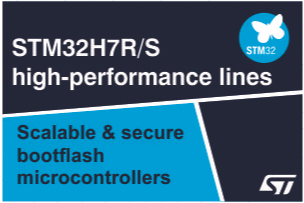
The global electronics industry is undergoing a profound transformation, shaped by digital convergence, sustainability imperatives, and supply chain diversification. In an exclusive interaction with Electronics Maker, Mr. Gaurab Majumdar, Vice President (ASEAN, India, Middle East & Africa), Global Electronics Association, outlines his vision for a resilient and interconnected ecosystem. He emphasizes India’s pivotal role in driving innovation, workforce development, and policy alignment, while highlighting how the Association is shaping global standards, sustainability, and collaboration to prepare the industry for the next decade.
What is your long-term vision for the electronics industry globally, and where does India fit into that picture?
The global electronics industry is at a transformative juncture, driven by digital convergence, energy transition, supply chain diversification, and an urgent need for sustainability. My long-term vision is to see a globally interconnected yet locally resilient electronics ecosystem, one that is agile, inclusive, and future-ready. This means more intelligent manufacturing, stronger industry-academia collaboration, and harmonized global standards enabling seamless interoperability and responsible innovation.
India plays a pivotal role in this vision. With its growing design-led manufacturing capabilities, strong talent base, policy reforms, and increasing geopolitical relevance, India is emerging as not just a production hub but also a strategic growth driver for the global electronics supply chain. Whether it’s in semiconductors, automotive electronics, consumer devices, or defence systems, India is positioned to lead.
At Global Electronics Association, we are actively supporting this journey by working closely with industry, government, and academia to strengthen standards adoption, workforce development, and global collaboration. As part of our commitment, in the coming year we plan to appoint an India Intelligence Manager and a Government Intelligence Head to deepen our market insights, strengthen policy engagement, and better align our global strategies with India’s growth priorities.
India’s rise is not a standalone story – it’s integral to the global evolution of electronics, and we are excited to shape that future together.
How do you see the Association shaping policy and global collaboration over the next 5–10 years?
Over the next decade, the electronics industry will play a far more proactive role in shaping policy and driving global collaboration. As technology continues to evolve rapidly whether in semiconductors, EVs, or AI-powered systems, industry stakeholders will increasingly work alongside governments and institutions to co-create policies that are sustainable, and globally consistent.
Key Strategic Pillars for the Future:
- Smart, Unified Global Advocacy:
Since rebranding from IPC in June 2025, Global Electronics Association has expanded its role beyond PCB standards to advocate for the full electronics ecosystem including semiconductors, IoT, autonomous systems, and AI technologies. Going forward, the association will amplify its global voice through deepened engagement with governments and regulatory bodies across Asia, North America, Europe, and beyond, promoting smart, innovation-friendly policies.
- Standards as the Backbone of Global Supply Chains:
Global Electronics Association will continue to elevate IPC standards and certifications to ensure interoperability, quality, and performance across borders. This harmonization effort will support trade resilience and reduce compliance friction for businesses across diverse regulatory landscapes.
- Insights & Market Intelligence:
Through its “Industry Intelligence” and Trade Flows reports, the association provides data-driven analysis that helps stakeholders understand trade dynamics, supply chain vulnerabilities, and global interdependencies. These insights will guide strategic policymaking, investment decisions, and risk mitigation globally.
- Driving Sustainability:
Global Electronics Association’s “Evolve” initiative champions sustainable electronics through tools, partnerships, and thought leadership. Their advocacy spans key environmental regulations (e.g., chemical & product policies, Corporate Sustainability Due Diligence, right to repair) and works to shape policies that reinforce green manufacturing practices.
- Building Global Talent & Government–Industry Ecosystems:
By collaborating across academia, governments, and industry, the association is advancing the development of training programs, certifications, and workforce initiatives, especially for technologies like advanced packaging and smart manufacturing.
With geopolitical tensions and reshoring trends, how are global electronics manufacturers redefining their strategies?
The electronics manufacturing landscape is undergoing significant recalibration. Faced with rising geopolitical uncertainties and shifting trade dynamics, companies are increasingly prioritizing resilience, flexibility, and risk mitigation in their global strategies. We’re witnessing a shift toward diversified production footprints, where manufacturers no longer rely on single geographies but instead expand across multiple regions to ensure continuity and responsiveness.
Alongside this, there’s a growing emphasis on building supply chains closer to key consumption markets, enhancing agility while minimizing exposure to external disruptions. At the same time, manufacturers are investing in digital capabilities such as real-time supply chain monitoring, predictive analytics, and AI-driven forecasting to enable smarter, faster decision-making. There is also a visible shift toward aligning with regions that offer policy stability, trusted trade partnerships, and strong regulatory frameworks.
Ultimately, Electronics manufacturers are embracing a multi-pronged strategy – blending diversification, localization, smart automation, and strategic partnerships, to build supply chains that can withstand turbulence and remain competitive.
With the electronics industry undergoing rapid transformation, how is the Global Electronics Association facilitating high-impact engagement among global stakeholders to address challenges, share expertise, and drive the next phase of industry growth?
As the electronics industry evolves at an unprecedented pace, there is a growing need for global stakeholders to come together, align priorities, and collectively shape the path forward. The Global Electronics Association is deeply focused on enabling this alignment through platforms that are not only collaborative but also action oriented.
One of the most impactful initiatives in this direction is the Integrated Electronics Manufacturing & Interconnections (IEMI). The annual electronics industry forum for South Asia is scheduled to take place in Bengaluru, India on January 29-30, 2026.
IEMI will bring together players in electronics industry – OEMs, EMS, PCB manufacturers, cable & wire harness manufacturers, semiconductor companies, and electronics industry suppliers. The two-day event will focus on Defence & Aerospace, Electric Vehicles (EV) & Consumer Electronics.
Complementing this flagship event, the Association will also organize industry networking sessions across multiple countries, including Malaysia, Thailand, Vietnam, UAE, Saudi Arabia, Singapore, and Sri Lanka, creating year-round opportunities for members to connect, exchange expertise, and explore business collaborations.
The event is designed to facilitate meaningful collaboration, share best practices, align on global standards, and support industry-wide transformation in high-growth segments of the electronics sector.
Can you speak to the role of emerging markets, especially in Southeast Asia, in the evolving electronics value chain?
As the industry moves toward greater diversification, resilience, and regional integration, Southeast Asia has become a key enabler not just in manufacturing, but also in standards adoption and workforce development.
Each market brings distinct capabilities that, together, create a highly complementary ecosystem. Malaysia, for instance, has long been a leader in semiconductor packaging and testing, with mature infrastructure and a growing push into advanced manufacturing and chip design. Thailand is leveraging its strong automotive base to emerge as a hub for automotive electronics and smart mobility, while investing in digital transformation and industry workforce upskilling.
Vietnam has rapidly scaled up as a destination for electronics assembly and EMS operations. Its competitiveness in cost, compliance, and speed has attracted major investments, and we are seeing an increasing interest in component manufacturing and design services. The Philippines continues to provide specialized strength in semiconductor back-end processes and boasts a skilled engineering workforce, especially in PCB layout and design support.
Each country in the region is advancing at its own pace, based on local priorities, capabilities, and policy frameworks. What’s remarkable is the individual growth trajectories, and the way these countries are aligning around global standards, sustainability goals, and workforce transformation. Southeast Asia is no longer a support pillar, it’s becoming a strategic engine driving the next phase of global electronics.
What kind of regulatory support do electronics manufacturers most need today?
Electronics manufacturers today are navigating a complex environment shaped by rapid technological change, evolving global trade dynamics, and rising sustainability expectations. What they need most from regulators is support that enables agility, competitiveness, and long-term growth without adding unnecessary friction.
First, there is a strong need for clear, stable, and globally aligned policies, particularly around import/export regulations, component classifications, and compliance processes. Uncertainty or frequent policy shifts can slow down investment and disrupt supply chains.
Second, regulations should increasingly recognize and integrate international standards. When local compliance frameworks align with globally accepted technical and quality standards, it reduces duplication, and allows manufacturers, especially SMEs to expand more easily into global markets.
Government schemes such as Make in India, PLI (Production-Linked Incentive) programs, Electronics Manufacturing Clusters (EMC), and Digital India can be powerful enablers designed to complement these goals. By aligning such schemes with clear policy direction, global standards adoption, and targeted infrastructure support, governments can help companies strengthen competitiveness and attract global investments.
Support for workforce development and technology adoption is equally important. Policies that incentivize investment in automation, advanced packaging, and upskilling can help companies move up the value chain and meet the demands of next-gen electronics.
Finally, regulatory frameworks around sustainability need to strike the right balance encouraging responsible practices like e-waste management and ESG reporting, while offering phased, practical implementation support.
How is the Global Electronics Association facilitating dialogue between governments, academia, and industry?
In India and Southeast Asia, we are enabling structured, outcome-driven collaboration between industry, academia, and government.
At the Global Electronics Association, our approach is rooted in real-world implementation. Through our regional offices, we work closely with stakeholders on the ground to bridge policy direction, technical education, and industry capability.
One example is our Workforce Development Project, implemented with institutions like VVIET in India, where students receive IPC standards-based training, hands-on industry exposure, and direct placement opportunities, ensuring they are job-ready from day one.
Our training and certification programs are localized in multiple languages and tailored to regional needs with evolving industry requirements. In addition, our Validation Service helps EMS providers and their suppliers improve quality and reliability across the supply chain.
Beyond structured programs, we facilitate hands-on engagement through technical sessions, webinars, and skill competitions, like hand soldering and wire harness competitions which create practical engagement for industry professionals.
Through these channels, we translate global standards into local execution and bring field insights back into policy and education, creating a virtuous cycle of collaboration.
How do you ensure the voices of smaller players and startups are also heard in global conversations?
Small and medium enterprises (SMEs) are the backbone of the electronics industry, bringing agility, niche expertise, and breakthrough innovations that strengthen the entire supply chain. At the Global Electronics Association, we ensure their voices are heard by creating inclusive platforms, most notably the Integrated Electronics Manufacturing & Interconnections (IEMI) forum, and our year-round industry networking sessions.
Our training and certification programs help SMEs meet international benchmarks, while targeted R&D and innovation initiatives provide opportunities to collaborate, co-develop, and scale new technologies. A strong example is KCS Engineering Solutions, a Hyderabad-based startup that leveraged IPC standards and workforce training in cable and wire harnessing to transform from a small operation into a trusted supplier for India’s defense EMS sector. Their journey shows how access to global standards, practical skills training, and industry connections can enable startups to meet stringent quality demands in mission-critical sectors.
By capturing these ground-level perspectives through our regional offices and channeling them into global policy and standards discussions, we ensure the future of electronics reflects the needs and ambitions of the entire ecosystem, not just its largest players.
One of the industry’s biggest challenges is talent. How can countries better prepare their workforce for the next decade of electronics growth?
Talent is indeed one of the most critical determinants of how well countries will capture the next wave of electronics growth. The challenge isn’t just about numbers, it’s about building a workforce with the right mix of technical skills, adaptability, and global mindset.
First, countries need stronger integration between academia, industry, and government. This means embedding industry-recognized standards and real-world manufacturing practices into academic curricula so that graduates are job-ready on day one. Initiatives like the Workforce Development Project we have implemented are good examples combining IPC standards-based training, hands-on internships, and direct industry engagement to create a skilled talent pipeline. Public-private partnerships can accelerate this process by establishing specialized training hubs and innovation centers tailored to emerging technological needs.
Second, governments should align policy and incentive schemes, such as Production-Linked Incentives (PLI), skilling subsidies and R&D tax benefits with workforce development goals. This ensures companies have both the motivation and the resources to invest in upskilling and reskilling.
Third, the focus must shift from basic assembly skills to advanced capabilities, such as automation, advanced packaging, electronics design, and sustainability compliance. By nurturing talent in these high-growth areas, countries can move up the value chain and avoid being trapped in low-margin manufacturing.
Finally, workforce development must be treated as a continuous process. Technologies, standards, and market requirements evolve rapidly; training programs must evolve with them. Countries that foster a culture of lifelong learning, supported by industry and government, will be best positioned to lead in the next decade of electronics growth.
At the Global Electronics Association, our role is to connect these dots globally – translating international best practices into local execution and ensuring that talent, wherever it is developed, meets the needs of a fast-changing global industry.






